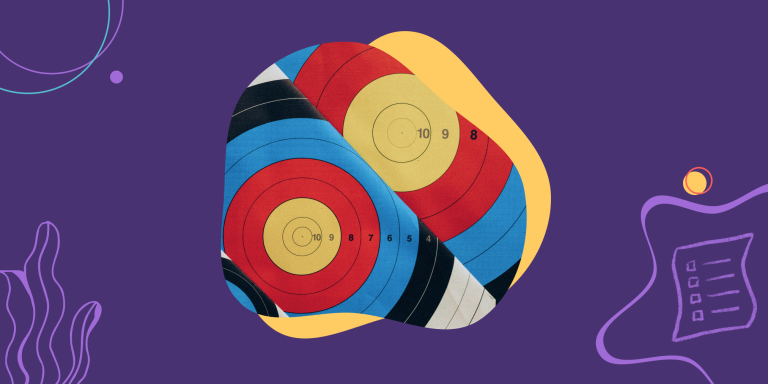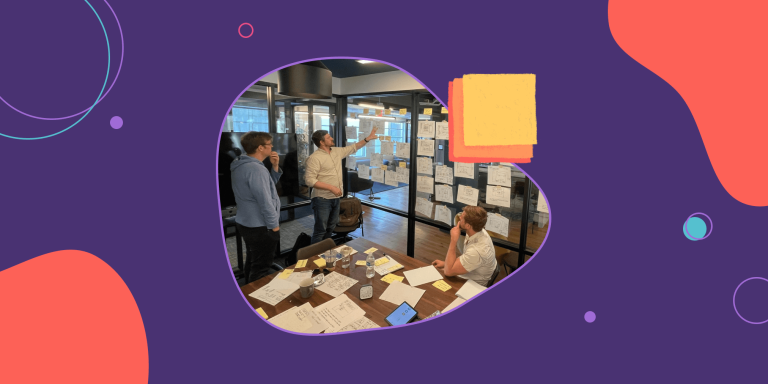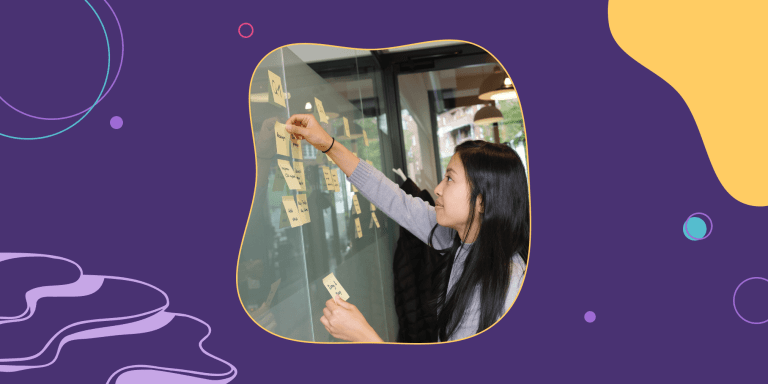Team Coaching Exercises: Journey Lines, Market of Skills, and More

Great teams don’t just happen by mistake. You need time, effort, and a bit of chemistry to turn a group of professionals into an effective team. One way to speed up that process is to use team coaching exercises.
If you’re leading a new team or feeling like your current team is out of sync, this list of five team coaching exercises can help. By running your team through these exercises, you’ll help them come together as a single unit that can work more effectively and independently.
1. Journey Lines
Duration: 30-60 minutes
Journey Lines help build stronger teams by giving people a chance to explain who they are to the wider group. In this activity, each person creates a timeline that documents the highs and lows of a particular time period.
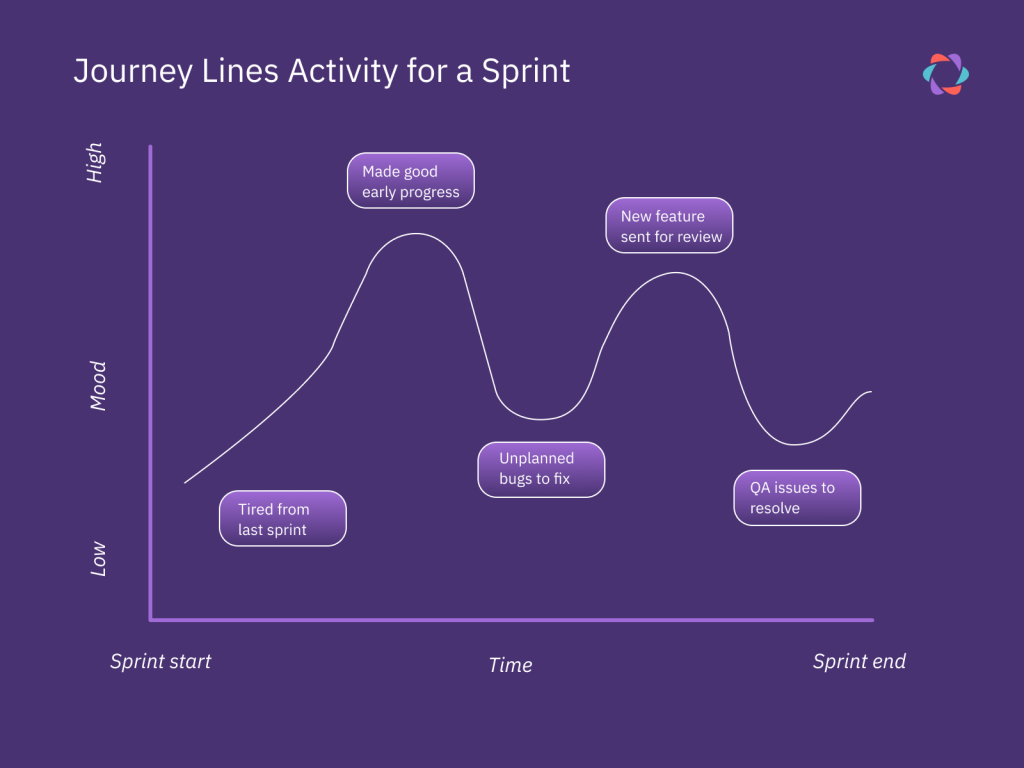
This game can help build more effective teams in two ways. First, it’s a great ice-breaker that allows new team members to be the author of their own past. They get a chance to let their new team know who they are, where they’re from, and what experiences have shaped them into who they are today.
You can also use Journey Lines to dissect past work. Everyone may have worked on the same project, but each individual will have a different experience. Seeing the ups and downs of a single sprint or project from multiple perspectives can help project managers spot friction points and resolve them.
How it works
Give each team member a large sheet of paper, a marker, and a pad of sticky notes.
Next, choose the timeline you’ll be mapping out. Some examples of what you could choose are:
- Your team’s last sprint,
- The progress you’ve made over the last quarter, or
- Each team member’s life from birth to now
When creating their timelines, the only thing participants will need to know is that the x-axis measures time while the y-axis represents how positive or negative an experience was. How they design from there is entirely up to them.
With the exercise explained, give the team at least 20 minutes to create their timelines. Afterward, come back and have everyone present their timelines, leaving time for discussion.
2. Market of Skills
Duration: 60 minutes
Even when you work every day with someone, you may not know everything they’re capable of. The Market of Skills exercise gives the team an opportunity to share their skills with the wider group.

In Market of Skills, each person on your team will design a market stall that comes equipped with all of the hard and soft skills they have to offer. Team members can then shop the stalls, figuring out what skills interest them so they can call on that person to help with a project, enter into a mentoring arrangement, or pursue self-guided development.
Having team members share their skills helps build teamwork in a few ways. First, it offers quieter or newer team members a chance to showcase what they can do outside of their regular job duties.
Second, managers may learn a thing or two about what their teams can do, meaning they can better make use of the talent they’re managing.
Finally, this exercise is also brilliant for team bonding and cross-functional connection as people can share skills that are inherent to who they are but may not be so important for the job they do.
How it works
For this activity, you’ll need a poster board for every team member, colored markers, and a long rope or string.
Start by having everyone design their poster board market with all of the hard and soft skills they wish to share with the team. It can help to give some examples of what this might look like to get them started. Ideally, they will draw a market stall with the skills they use when they work on top of the table and the skills they don’t use underneath it.
Give everyone at least 20 minutes to brainstorm and draw their market stall.
Next, have each person share their posterboard with the team, explaining what skills they can offer the group. Encourage other members to take notes on what skills interest them.
Finally, create a web of skills by having one person say what skills they find interesting in another team member and then have them pass that person one end of the rope. Continue sharing and passing the rope until your web is complete.
When this is all done, leave some time to discuss the results as a group.
3. Top Traits
Duration: 60-90 minutes
Building on the insights gained from Journey Lines, the Top Traits exercise focuses on recognizing and valuing the attributes of individual team members.
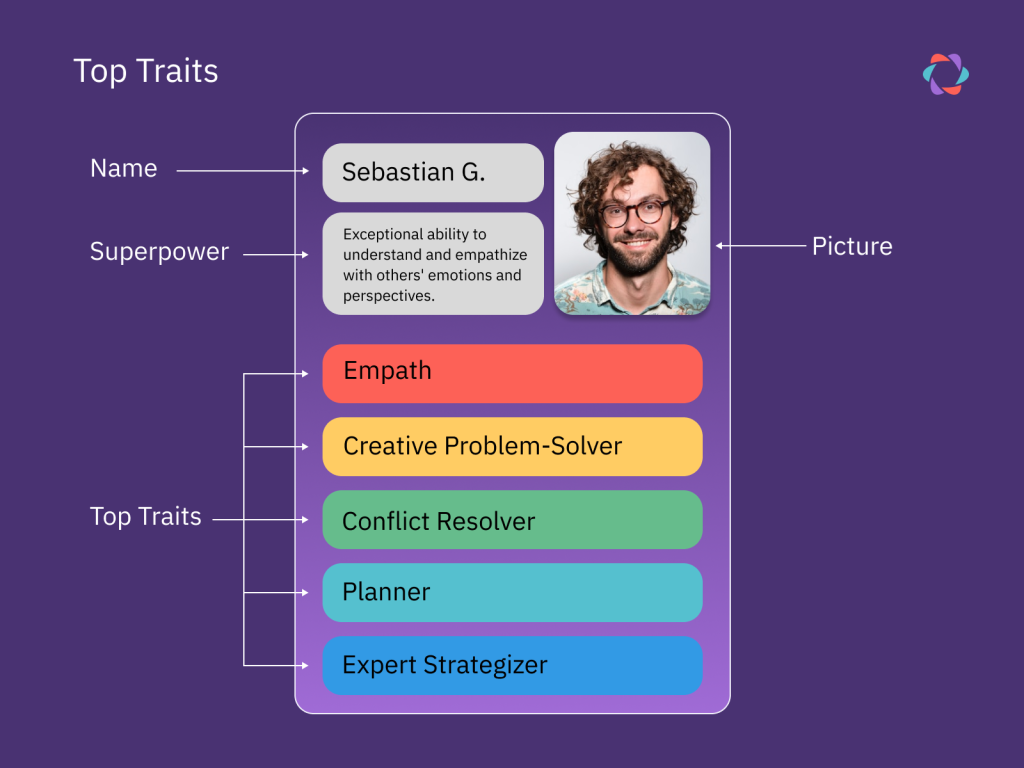
In this exercise, one team member at a time will share their life journey without interruptions. After sharing, the listeners identify personality traits they believe the narrator has. The goal is to create a sort of Top Trumps card for your peers.
This coaching activity is a powerful tool for bringing teams together as it gives each member a platform to share who they are with the group. It also offers a chance for team members to actively connect by encouraging deep listening, insightful discussion, and the sharing of life stories.
When done correctly, Top Traits can help your team build rapport, find common ground, and have a better understanding of the people they work with every day.
How it works
For the Top Traits activity, you’ll need blank cards for each team member, pens or markers, and a comfortable, open space for the team to gather.
First, you’ll want to select someone to go first. Choose yourself or someone familiar with this exercise so they can model how it works for everyone else.
Next, whoever has been selected will narrate their personal journey, focusing on key experiences and moments in their life.
Other team members will listen to this narration and, when it is done, suggest personality traits they picked up on from the narrator. With each suggestion, the narrator can choose to accept or reject the traits proposed. Any traits they agree with will be added to the Top Traits card until they have five top traits listed.
After the traits are finalized, the narrator can add a personal nickname, draw a self-portrait on the card, and state their unique superpower – a skill they believe they excel in more than anyone else.
Repeat this process for each team member.
4. Constellations
Duration: 60-90 minutes
Constellations is an innovative coaching activity that allows teams to visually explore and understand where their team members are emotionally or mentally on a topic.
Team leaders could use Constellations to address a number of questions on anything from whether teams like the snacks in the breakroom to how they are dealing with the loss of a coworker.
This exercise is especially important for teams that have undergone a change. Changes, small or large, can have massive effects on the morale and efficiency of a team. This exercise will give team members a chance to understand where they are in accepting these changes and help them identify what they’ll need to do to find acceptance.
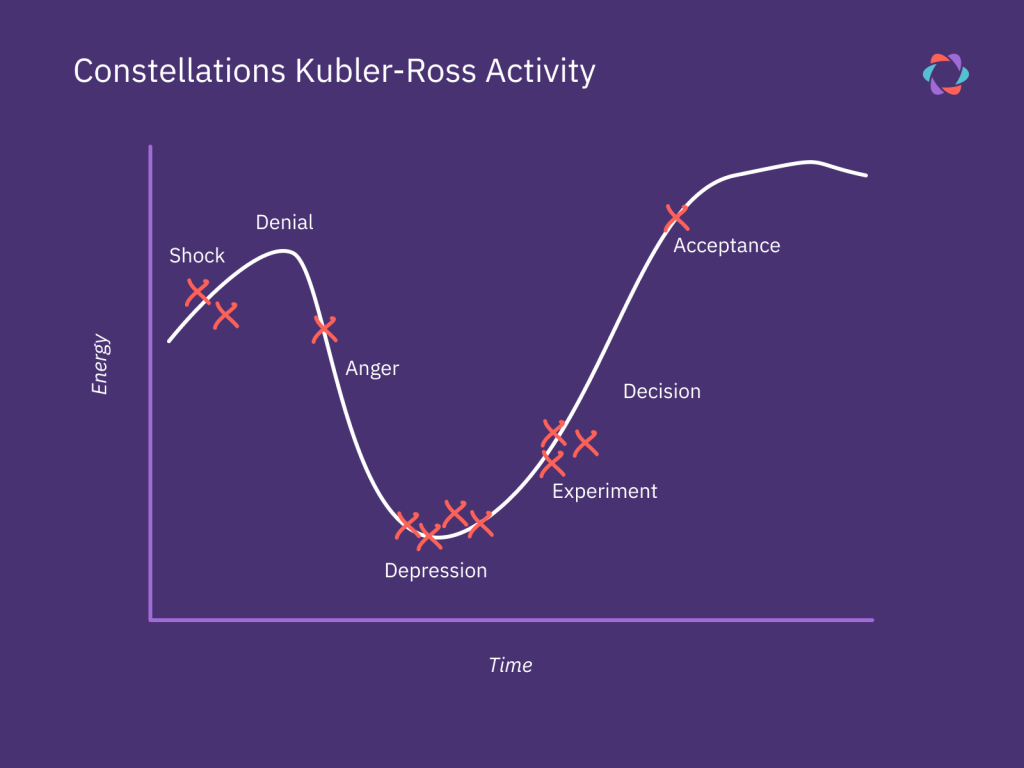
By bringing awareness to where the group stands in terms of dealing with changes and their emotional responses to them, it’s possible to bring some of these issues to the surface. Plus, this exercise can begin the healing process by helping teams discuss issues and brainstorm actionable solutions that address the way people are feeling.
How it works
To get started, you’ll need a virtual whiteboard or an online meeting platform. Although you could try to do this in person with a whiteboard, it would be better to have this anonymous so people can share freely.
Once everyone is ready, introduce the five stages of grief associated with the Kubler-Ross Change Curve.
Next, give some background on the change you’re currently addressing. This could include a recent restructuring of the company, a switch to agile, or even the loss of a coworker.
When everyone understands what is being discussed and how the curve works, ask each person to anonymously place a dot on the curve that represents where they currently are in the healing process.
After everyone places their dots, encourage a group discussion on what they observe. There’s no need to ask “why” questions here. The important part is just exploring where people fall on the curve in a non-judgemental way.
If people are hesitant to speak, you, as the facilitator, can get the conversation started by sharing your own observations about what surprised you about this curve. Did you expect more people to be at acceptance? Were you glad to see you weren’t the only one still in the depression phase?
Once the discussion is done, set out a fresh curve and ask people to place a dot where they hope to be in three months. Afterward, go through another round of discussion on what this looks like.
Next, have participants brainstorm the changes or actions needed to move the group toward where they want to be in three months. If you’re doing this with a group larger than 15, break everyone into smaller groups so that people have a chance to talk and share.
After all of this, summarize all of the recommendations and have the entire team vote on which ideas should be implemented moving forward.
Finish with a quick debrief so people can reflect on what they’ve learned through this exercise.
5. The Values
Duration: 30 minutes
The Values is a simple coaching activity designed to help Scrum Masters get their teams thinking more critically about the Agile Manifesto values and what they really mean. If your team is not implementing agile, then you could try to replace the agile values with your company’s own set of values for this exercise.
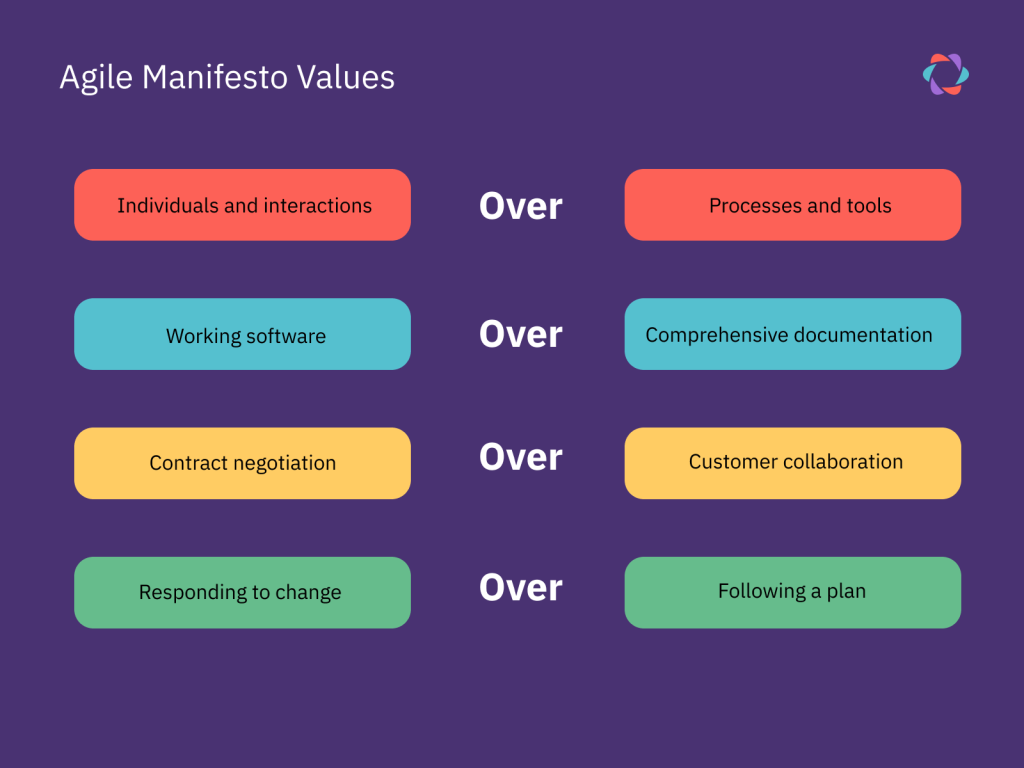
In this activity, you will break your team into small groups and then ask them to assemble the four values of agile from cut-up pieces of the Manifesto.
Right or wrong, each team will need to explain the thought process behind why they assembled the values the way they did. This gives team leaders valuable insight into how their team thinks and what they see as valuable. It’s also a powerful tool for teams to inspect their own values and align their practices with the core agile values, promoting a culture of continuous improvement and agility.
How it works
First, create the puzzles that the teams will need to put together. For teams new to agile, simply break each value in half and have your teams determine which two go together and in which order.
For more experienced teams, put each word on its own piece of paper and have them arrange those.
Next, divide the team into groups and have them arrange the pieces to reconstruct the Agile Manifesto.
When the teams are done, have each group share their finished product as well as the reasoning behind why they ordered the values the way they did. Coaches or Scrum Masters can use this time to ask “why” questions to understand the headspace of the groups.
Finish the session by creating a final, correct version of the Manifesto for everyone to reference. Consider displaying it in common areas to reinforce its principles regularly.
Improve teamwork even when you’re not in the office
As a manager, there’s always more you can do to bring your team closer together. However, a lot of team-building exercises (including many of those mentioned in this article) are designed for in-person meetings.
If you are managing a remote or hybrid team and want to continue team-building exercises when everyone is not in the office, you should take a look at this article on 8 Online Games for Remote Teams to Build Rapport. In this guide, you’ll be introduced to several games your team can play when they’re away from the office so you can continue strengthening your team no matter where they are.


